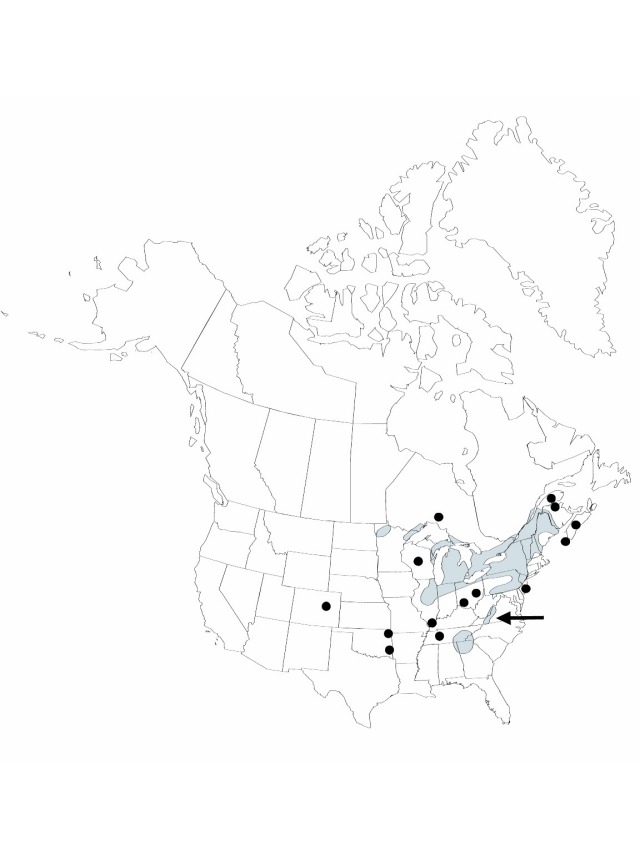Juncus brachycephalus
Botanische Jahrbucher fur Systematik, Pflanzengeschichte und Pflanzengeographie 12: 268. 1890.
Herbs, perennial, cespitose, 2–7 dm. Culms erect, 1–4 mm diam., smooth. Cataphylls 1–2, straw-colored to pink, apex acute. Leaves: basal 1–3, cauline 1–2; auricles 0.6–1.5 mm, apex rounded, scarious; blade terete to compressed, 0.2–12 cm × 0.5–2 mm. Inflorescences panicles of 5–80 heads, 5–25 cm, branches ascending; primary bract erect; heads 2–6-flowered, ellipsoid to obovoid, 2–5 mm diam. Flowers: tepals green to light brown, lanceolate; outer tepals 1.8–2.5 mm, apex obtuse to nearly acute; inner tepals 2–2.8 mm, apex obtuse to nearly acute; stamens 3 or 6, anthers 1/2 filament length. Capsules exserted, chestnut to dark brown, imperfectly 3-locular, obconic, 2.4–3.8 mm, apex acute proximal to beak, valves separating at dehiscence. Seeds ellipsoid to fusiform, 0.8–1.2 mm, tailed; body covered with whitish translucent veil. 2n = 80.
Phenology: Fruiting summer–early fall.
Habitat: Calcareous marshes, wet meadows, and wetland shores
Elevation: 100–200 m
Distribution

N.B., N.S., Ont., Que., Ala., Colo., Conn., Ga., Ill., Ind., Maine, Mass., Mich., Minn., N.H., N.J., N.Y., N.C., N.Dak., Ohio, Okla., Pa., Tenn., Vt., Va., W.Va., Wis.
Discussion
Selected References
None.